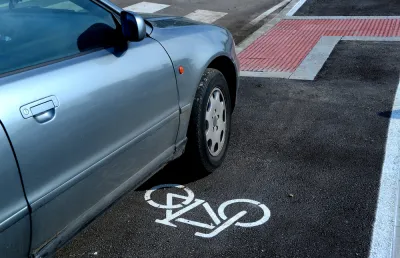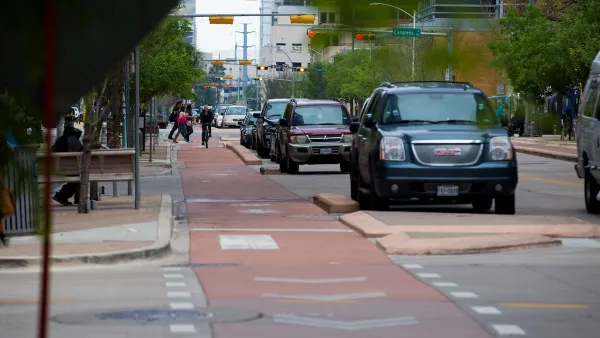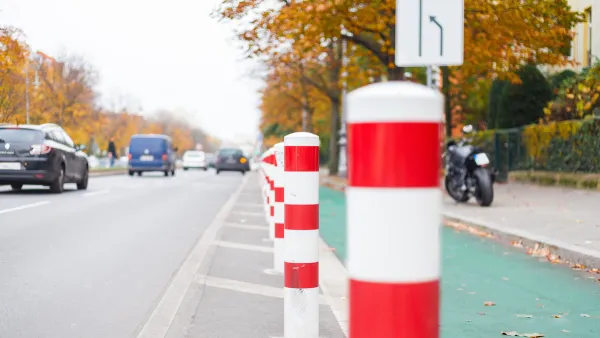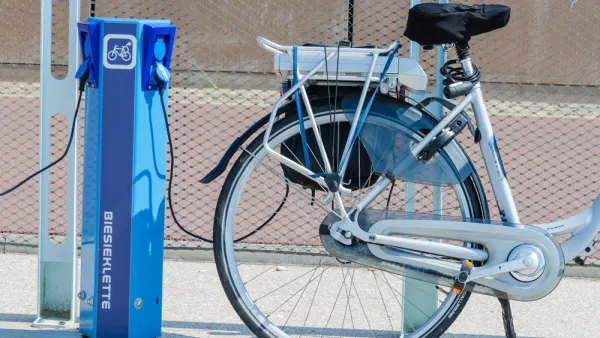To some, a protected bike lane saves lives; to others, it threatens the survival of a community.

The District Department of Transportation (DDOT) is considering several options for a new protected bike lane in downtown Washington. Three of the four proposed options run along Shaw-neighborhood stretches of 6th St/Route 50, a busy commuter street running from Capitol Hill north into the suburbs. According to the Washington Area Bicycle Association, 12 cyclists were hit last year on this stretch of 6th St NW.
At least one of the proposed options is adjacent to the United House of Prayer for All People (UHOP), a century-old church with a strong historical presence in the neighborhood. Congregants are vociferously opposed to a protected bike lane because it would reduce the number of parking spaces available to its congregants, who currently enjoy special Sunday street parking privileges. Many congregants showed up to a DDOT meeting at the Shaw library to voice their opposition, highlighting what Perry Stein characterizes as "a tension in the rapidly changing District between longtime, black residents and new, largely white residents."
"This ain’t London, this ain’t Europe. The United States is built on the automobile and we need to respect that," said Michael Green, a deacon at New Bethel Baptist Church, another church in the neighborhood that would be affected by one of the four bike lane options.
Shaw and surrounding neighborhoods have experienced rapid demographic change over the past 15 years. While gentrification is difficult to define, many cite the NW neighborhoods near Capitol Hill as prime examples of it. Median home values and household incomes in much of the area have nearly doubled. The majority-Black church perceives the bike lanes as another city policy driving out African-Americans, according to a letter written to the DDOT by the church's lawyer.
"These conflicts stem from the change in D.C.’s neighborhoods," writes Stein. "Many of D.C.’s churches were built at a time when their neighborhoods, such as Shaw, weren’t as teeming with condos and restaurants, and parking wasn’t as big of an issue. Additionally, many longtime churchgoers have left the city for the suburbs and now commute to their old churches by car."
John Stanton illustrates the positive role the UHOP has played through decades of crime and poverty, with its soul food kitchen and annual Memorial Day parade. "[The parade] has been a central part of Memorial Day for the Shaw and Logan Circle neighborhoods, even during the decades when the area was ravaged by crime and drugs. In fact, for many years UHOP’s parade was one of the few times neighbors would congregate without the flashing red and blue glare of police lights."
The UHOP's lawyer argues that because the protected bike lane would reduce the number of available parking spaces for congregants, it infringes upon "its constitutionally protected rights of religious freedom and equal protection of the laws." The WABA argues that protecting space for cyclists does not prevent anyone from going to church. For its part, the DDOT states that it a non-political agency charged with improving traffic safety and energy-efficient alternatives to single-occupant vehicles.
FULL STORY: Can some big D.C. churches fight off a bike lane? They are bringing large crowds to try.

Analysis: Cybertruck Fatality Rate Far Exceeds That of Ford Pinto
The Tesla Cybertruck was recalled seven times last year.

National Parks Layoffs Will Cause Communities to Lose Billions
Thousands of essential park workers were laid off this week, just before the busy spring break season.

Retro-silient?: America’s First “Eco-burb,” The Woodlands Turns 50
A master-planned community north of Houston offers lessons on green infrastructure and resilient design, but falls short of its founder’s lofty affordability and walkability goals.

Test News Post 1
This is a summary

Analysis: Cybertruck Fatality Rate Far Exceeds That of Ford Pinto
The Tesla Cybertruck was recalled seven times last year.

Test News Headline 46
Test for the image on the front page.
Urban Design for Planners 1: Software Tools
This six-course series explores essential urban design concepts using open source software and equips planners with the tools they need to participate fully in the urban design process.
Planning for Universal Design
Learn the tools for implementing Universal Design in planning regulations.
EMC Planning Group, Inc.
Planetizen
Planetizen
Mpact (formerly Rail~Volution)
Great Falls Development Authority, Inc.
HUDs Office of Policy Development and Research
NYU Wagner Graduate School of Public Service




























